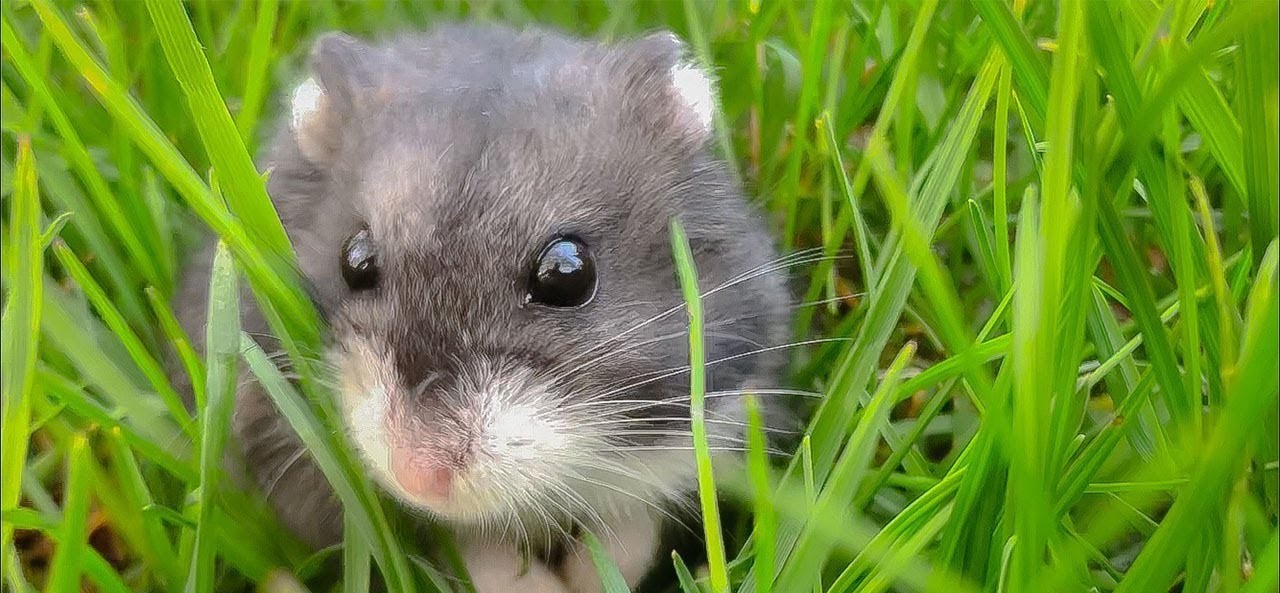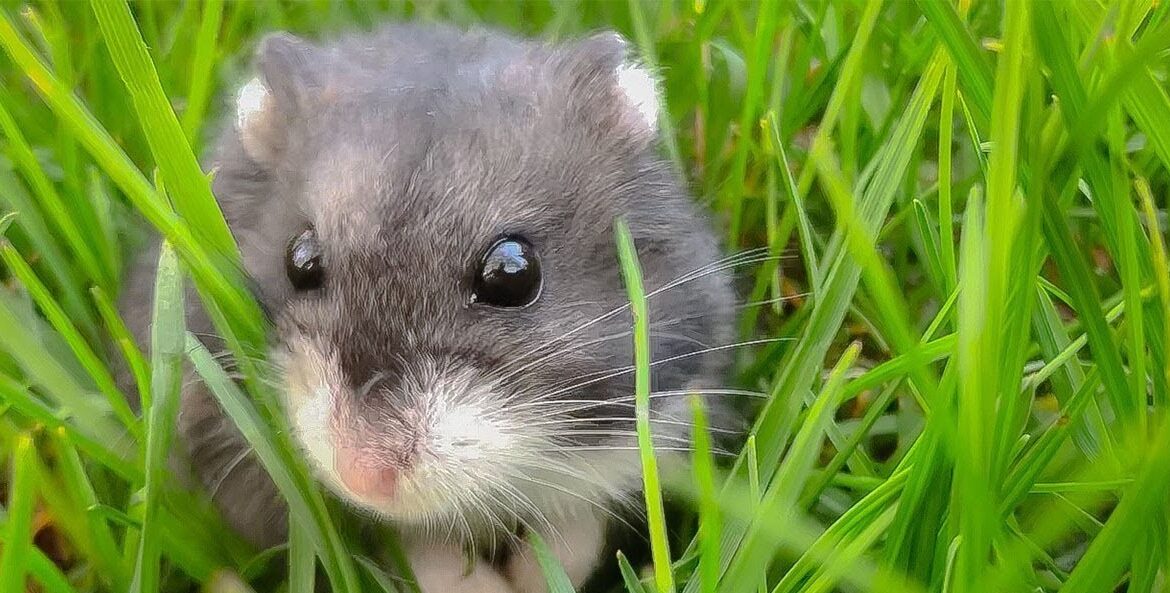Discovering signs of mice in yard areas around your home can be concerning. Are they just passing by, or are these tiny visitors turning into houseguests? Here’s how you can determine if mice have infiltrated your living space and the steps you can take to protect your property. Below, we’ll cover how to identify signs of mice in yard and home areas, understand the risks, and explore effective mice prevention strategies for St. Paul homeowners.
Signs of Mice in Your Yard and Home
Mice are resourceful creatures that can thrive in your yard and use it as a gateway to your home. If you notice these signs, it’s worth investigating further to see whether they’ve already moved indoors.
- Droppings
Mice droppings are one of the most obvious indications of their presence. You’ll often find them near food sources, under sinks, or along the edges of paths they frequently use. Outdoors, keep an eye out for droppings near garden sheds, compost piles, or bird feeders.
- Tracks and Trails
Look for small footprints or tail marks in dusty or muddy areas of your yard. For indoor spaces, these tracks can often be seen along walls, in basements, and behind large appliances.
- Gnaw Marks
Mice have sharp incisors and may gnaw on various materials like wood, electrical wiring, and plastic. Outside, inspect outdoor furniture, fences, or garden tools for bite marks. Indoors, look for chew marks on furniture and walls.
- Nesting Materials
Mice build nests using materials like shredded paper, leaves, grass, or fabric. Outside, check under porches, in piles of debris, or in thick vegetation for potential nests. Inside, nests are often hidden in attics, basements, or wall voids.
- Sounds and Smells
At night, mice can often be heard scurrying in walls or ceilings. An ammonia-like smell could also indicate the presence of their urine in tight spaces.
- Holes and Entry Points
Outdoors, mice may burrow into the ground or use cracks near your home’s foundation to gain entry. Check around vents, utility pipes, and gaps in brickwork.
If these signs suggest a growing population near your home, it’s crucial to prevent an escalation. Acting quickly can stop them from making their way indoors.
Mice Prevention Strategies
Preventing mice from entering your home starts with controlling their access and removing any temptations around your property. Here’s how to take charge of your space and keep your home secure.
- Seal Entry Points: Mice can squeeze through holes as small as ¼ inch. Inspect your home’s exterior for cracks, gaps, or openings. Seal these with heavy-duty materials like steel wool and caulking.
- Secure Food Sources: Mice are always on the hunt for food. Store food items in airtight containers and clean up spills or crumbs immediately. For outdoor areas, avoid leaving pet food or birdseed where mice can access it.
- Eliminate Water Sources: Fix leaky faucets, remove standing water, and ensure gutters and drainage systems are clear.
- Remove Outdoor Clutter: Woodpiles, leaf litter, and overgrown shrubs provide shelter for mice. Keep these areas tidy and move woodpiles at least 20 feet from your home.
- Maintain Landscaping: Trim back tree branches and shrubs that touch your house, and keep grass short to minimize cover for mice.
- Install Barriers: Use mesh screens on vents, chimneys, and windows. Install door sweeps on exterior doors to block access.
- Manage Garbage: Keep garbage bins tightly sealed and away from your house. This minimizes the likelihood of mice being attracted to your property.
Taking these steps can significantly reduce the likelihood of encountering mice indoors. However, if you spot signs that mice may have already entered your home, it’s time to act.
Do Mice in Your Yard Mean an Infestation?
If you’re seeing mice outdoors, you may be wondering if this means an infestation inside your home is inevitable. The answer depends on several factors, and knowing the risks can help you make educated decisions.
- Proximity to Shelter
If your yard provides plenty of cover, mice are more likely to explore your home for added warmth and food. Piles of wood, dense bushes, and gaps in decking can act as staging areas for them to enter.
- Seasonal Activity
During colder months, mice seek warmth and shelter indoors. Spotting them in your yard in late fall or winter makes it more likely they are already inside, or will be soon.
- Food and Water Availability
Mice are opportunistic. A yard with ample food and water sources can quickly become a permanent residence. This increases the likelihood of them venturing into your home.
- Population Growth
Mice reproduce rapidly. A small outdoor population can multiply quickly, increasing the chances of them moving indoors.
- Existing Entry Points
Holes or openings around your home are an open invitation. Pay particular attention to older homes in St. Paul that may have settled over time and developed gaps.
While spotting mice in your yard doesn’t always mean an indoor infestation, it’s always better to err on the side of caution. Even a few mice entering your home can turn into a much larger issue if left unaddressed.
Protecting St. Paul Homes From Mice
Skedaddle has over three decades of experience helping homeowners regain control of their space. St. Paul is a vibrant community, but with older homes and plenty of green spaces, it’s not uncommon for mice to make their way inside local properties.
Landmarks like Como Park and nearby neighborhoods with lush foliage provide ideal habitats for mice in the area. That’s why we stress the importance of proactive measures for homeowners. Our team knows the unique challenges St. Paul residents face when protecting their homes from these uninvited visitors.
If you’ve noticed signs of mice in yard and home areas, don’t wait to take action. Prevention is key, and addressing the problem early can save you from costly damage and potential health risks.
When to Contact Skedaddle for Mice Removal Services
The best time to contact Skedaddle for mice removal services is as soon as you notice any signs of rodent activity in or around your home. Early indicators may include droppings, gnawed furniture or wires, and scurrying sounds in walls or ceilings, particularly at night. Addressing these signs promptly can prevent a minor issue from escalating into a full infestation.
- Seasonal changes impact mouse activity.
- Mice are more likely to seek indoor shelter during colder months, increasing infestation risks in fall and winter.
- Warmer months can lead to larger outdoor populations and a higher chance of entry into homes.
- Acting quickly at the first signs of intrusion helps minimize property damage and reduce health risks.
Skedaddle is equipped to handle rodent issues year-round with humane and comprehensive solutions. Our trained professionals specialize in identifying entry points, removing existing mice, and implementing prevention strategies to ensure long-term protection. Don’t wait to take action—contact Skedaddle at the earliest signs of a problem to safeguard your home and restore your peace of mind.
Take Control of Your Home Today
Don’t let mice take over your home. By identifying signs early and implementing effective prevention strategies, you can protect your property and family. If mice have already invaded, our team at Skedaddle is here to help.
We specialize in humane, long-lasting solutions tailored to your home’s unique needs. Contact us today to reclaim your space and enjoy peace of mind knowing your home is secure.




